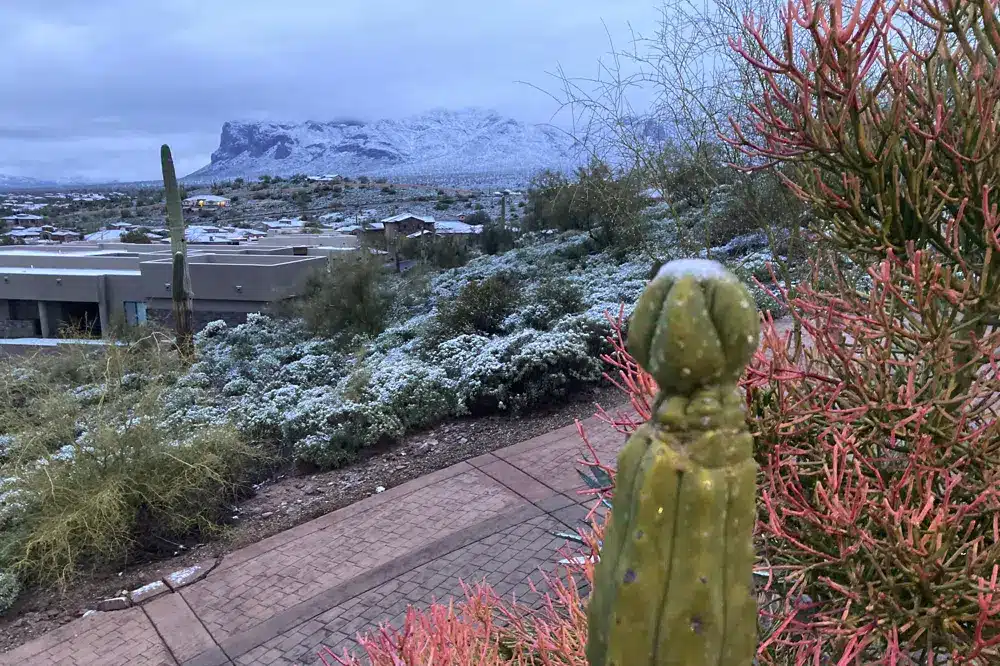Nearly a foot of snow fell in one day in Portland, Oregon, making it the second snowiest day in the city’s recorded history. There have been over 40 feet of snowfall in the Sierra Nevada since the beginning of the season, which is nearly unprecedented. On Thursday morning, residents of the Phoenix suburbs awoke to find cacti and lush golf courses blanketed in snow.
Exactly what is causing all this snow, if anything?
“This rain and snow bucked the trend and is highly unexpected,” said Ryan Maue, a meteorologist and former chief scientist at NOAA. It’s once in a generation, at the very least.”
According to meteorologists, there’s more to it than just a strong winter season.
While the current La Nia pattern does affect global weather, Maue noted that it is only one factor among many.
The National Weather Service’s Bianca Feldkircher has stated that the conditions for widespread snowfall along the West Coast have been created due to a persistent blocking pattern over the Pacific Ocean and cold air migrating south from the Arctic.
“Not only were you getting significant snowfall in areas that already see snow, but you were also seeing snowfall on lower elevations in Southern California,” said Feldkircher.
For instance, on March 1st, snow was predicted Meteorologists for some areas of Phoenix, Arizona, which, as Feldkircher pointed out, is “super unusual” for this time of year. And last week, Portland experienced unprecedented snowfall, with nearly 11 inches (28 centimeters) falling on February 2nd, the second snowiest day in the city’s history.
Scientists have difficulty pinpointing how much of the West Coast’s unusual winter can be attributed to man-made climate change.
The science of prediction improves all the time.
However, more severe weather events are anticipated as the Earth’s average temperature rises. Meteorologist Feldkircher explained that severe storms result from the combination of heat and moisture.
The science of prediction improves all the time. Better than ever, it may soon be able to provide more precise predictions of extreme events. Weather forecasting should be fine with climate change for a while, according to Maue.
While many places had it rough this winter, others are glad to see the rain.
In light of the prolonged drought in the Southwest, the recent rainfall has come as a welcome relief.
Maue noted that California frequently experiences rapid changes from abundance to scarcity when it comes to precipitation. “That’s why it’s important to have water regulations, reservoirs, Meteorologist and water supplies that can last through multi-year droughts from a policy standpoint.”
SOURCE – (AP)











